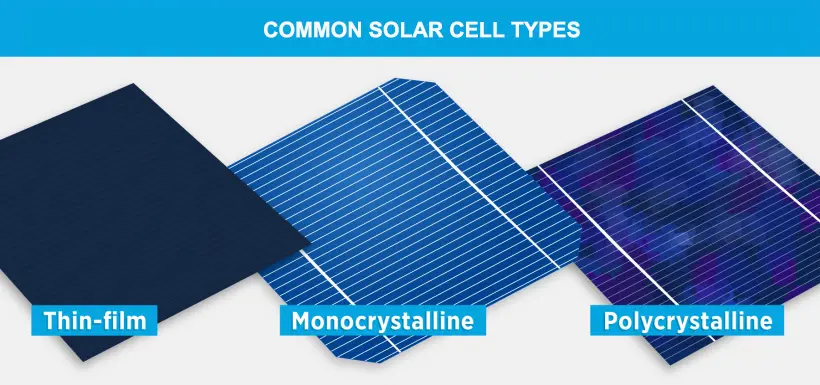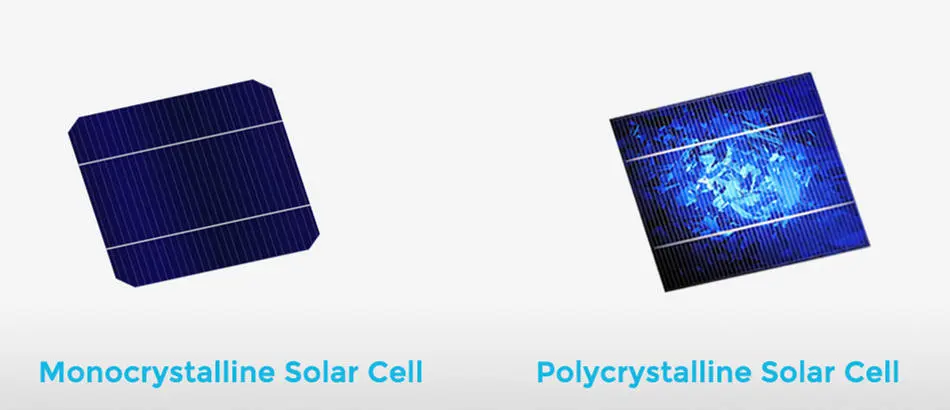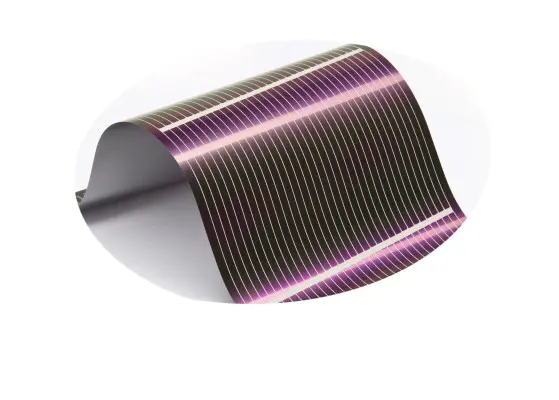
Solar cells are devices that convert light energy into electrical energy using the photovoltaic effect. There are many different types of solar cells, depending on the materials and technologies used. Some of the most common types of solar cells are:
• Crystalline silicon solar cells (c-Si): These are the first generation of solar cells, and they use silicon as the main semiconductor material. They have high efficiency and durability, but they are also expensive and require a lot of energy to produce. There are two subtypes of c-Si solar cells: monocrystalline (mono-Si) and polycrystalline (poly-Si). Mono-Si solar cells have a single crystal structure, which gives them a higher efficiency and a uniform appearance. Poly-Si solar cells have multiple crystals, which makes them cheaper and easier to produce, but also lowers their efficiency and gives them a grainy appearance.

• Thin-film solar cells (TFSC): These are the second generation of solar cells, and they use thin layers of semiconductor materials, such as amorphous silicon (a-Si), cadmium telluride (CdTe), or copper indium gallium selenide (CIGS), deposited on a substrate, such as glass or metal. They have lower efficiency and durability than c-Si solar cells, but they are also cheaper and more flexible. They can be used in applications where weight, shape, or cost are important factors.
The efficiency of different types of solar cells varies depending on various factors, such as the material quality, the fabrication process, the operating conditions, and the measurement methods. However, some general trends can be observed:
• Crystalline silicon solar cells have the highest efficiency among the commercialized technologies, ranging from 15% to 23%. Monocrystalline silicon solar cells usually have higher efficiency than polycrystalline silicon solar cells.
• Thin-film solar cells have lower efficiency than crystalline silicon solar cells, ranging from 10% to 20%. Among the thin-film technologies, CIGS has the highest efficiency record of 23.35%, followed by CdTe with 22.1%, and a-Si with 14%.
• Third-generation solar cells have not yet reached full commercialization, but some of them have shown promising results in laboratory settings. Perovskite solar cells have achieved an efficiency record of 25.2%, surpassing crystalline silicon solar cells. Dye-sensitized solar cells have reached an efficiency of 14.3%, while organic solar cells have reached an efficiency of 18%.






